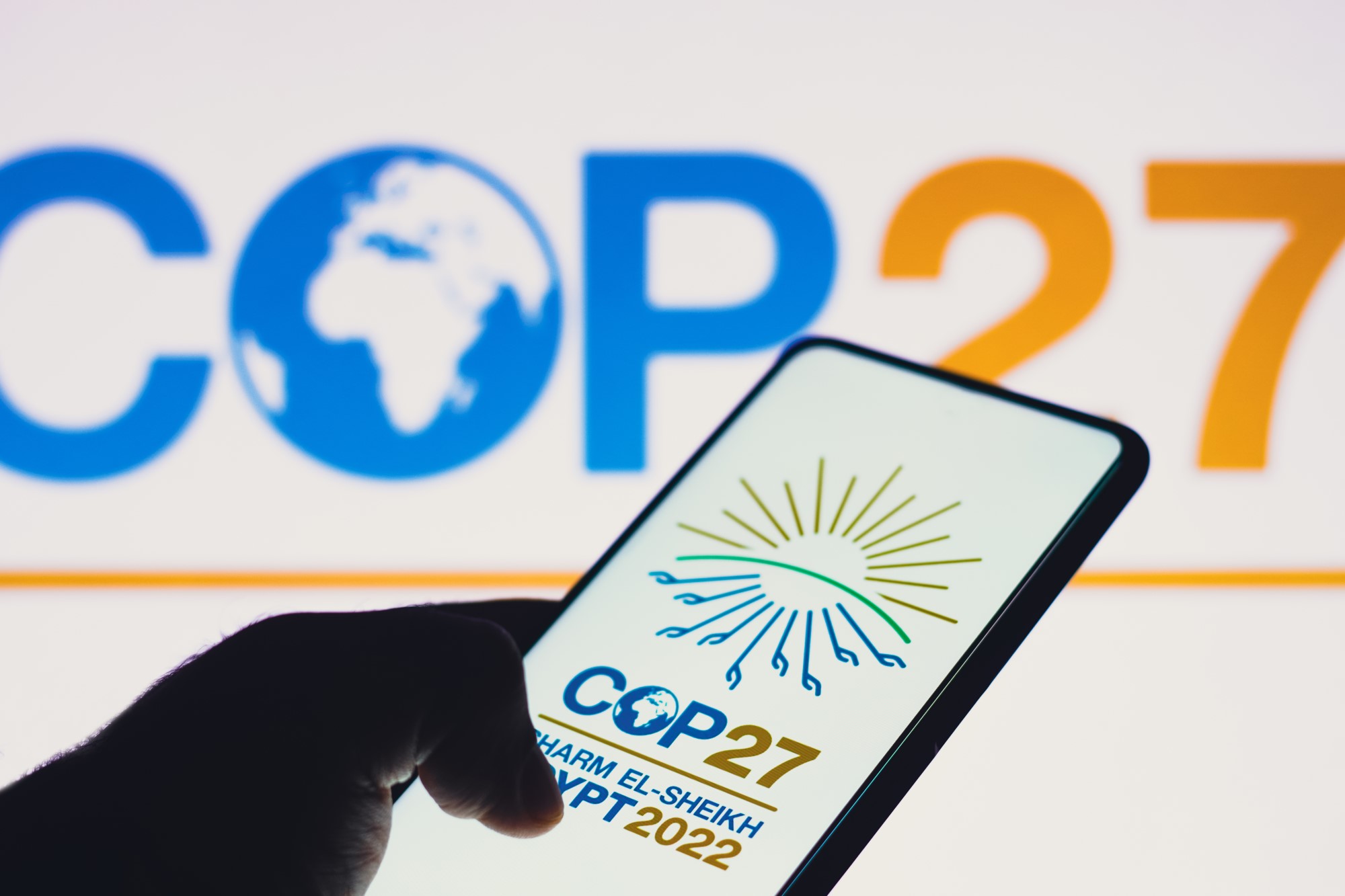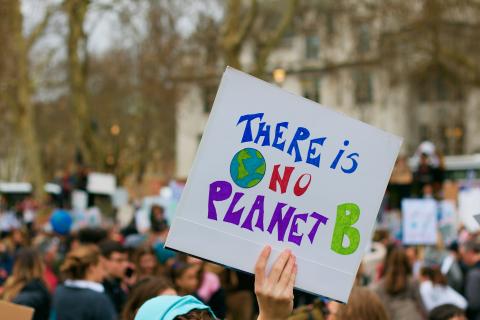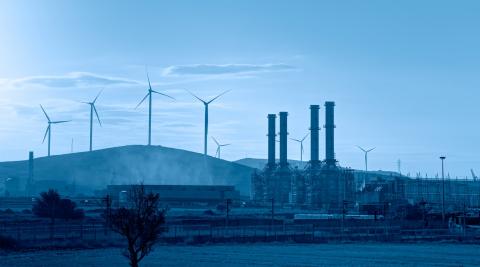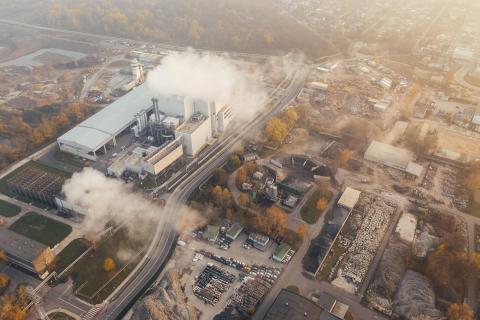When and where does COP27 take place?
The Climate Summit or COP27 will take place in Sharm el-Sheikh, Egypt, from 6 to 18 November 2022. Heads of state and government will participate on 7 and 8. In the final stretch, from the 15th to the 18th, high-level meetings involving ministers will be held.
What is a COP?
COP stands for the United Nations Conference of the Parties on Climate. This conference is the decision-making body of the United Nations Framework Convention on Climate Change (UNFCCC). The convention was adopted in New York in 1992, entered into force in 1994 and has been ratified by 198 parties - 197 states and the European Union.
The number 27 of this COP means that it is the 27th meeting of this conference. The first took place in Berlin in 1995.
COPs are held annually - except in 2020, due to the pandemic - where countries meet to take action to achieve the climate goals agreed under the Paris Agreement - which was reached at COP21 in Paris in 2015 - and the UNFCCC.
What are the objectives of this summit?
The organisers have summarised them in four areas:
- Mitigation: the aim is to limit global warming to well below 2°C and to maintain the 1.5°C target, as set in the Paris Agreement. "This year should see the implementation of the call made in the Glasgow Pact to review ambition in NDCs - countries' climate action plans called 'nationally determined contributions'," the organisation stresses.
- Adaptation: Setting a global adaptation goal was one of the achievements of COP26, held in Glasgow last year. "COP27 should see an enhanced global agenda for action on adaptation, confirming what we agreed in Paris and what was elaborated in the Glasgow Pact on putting adaptation at the forefront of global action," the organisers stress.
- Finance: this is a major issue at all COPs and much debated, especially for African countries, small archipelagos and least developed countries. "Existing commitments and pledges, announced from Copenhagen and Cancun through Paris to Glasgow, require follow-up to clarify where we are and what more needs to be done," summarises the organisation. Still on the table is the $100 billion a year pledge made at COP15 in Copenhagen (2009) for developed countries to support climate action in developing countries.
- Collaboration: according to the organisation, governments, the private sector and civil society must work together to transform the way we interact with the planet. "We need to turn the Glasgow outcome into action and start implementation," they urge.
What are Glasgow's unfinished business?
Beyond what was agreed in the Glasgow Pact, experts agree that COP26 ended with few important agreements and many unresolved tasks. Fernando Valladares, a CSIC researcher and expert on the impacts of climate change and human activity on ecosystems, explains to SMC Spain that the ambiguity of governments regarding the elimination of fossil fuel subsidies is one of the key issues that remains unresolved. "Governments subsidise them and it's a real contradiction," he says.
Another 'hot potato' is aid to the poorest countries, those most affected by the climate crisis. "Very little progress was made in terms of losses and damages, aid was not broken down and there was no compensation for those who lose the most," recalls the researcher.
Article 6 of the Paris Agreement - known as the emissions market - was also a stumbling block in the negotiations. Valladares stresses that tangible results in terms of mitigation - the so-called carbon credits - and the clean development mechanisms, "which need a reference crediting system, something inherited from the Kyoto Protocol and which should be renewed and updated". In the same article, non-commercial mechanisms to collaborate in mitigation, such as carbon taxes, are still not specified.
Finally, despite the existence of countries' climate action plans - the NDCs - what has not been addressed is a general mitigation of global emissions with some kind of mechanism to regulate it, according to the scientist.
What is the position of the European Union at COP27?
The European Council adopted its roadmap for this summit on 24 October. Member states stress that global ambition must be increased significantly to keep the 1.5°C target within reach, in line with the Paris Agreement. According to the Council, NDCs - countries' climate action plans - and their updates are insufficient. "All countries should present ambitious targets and policies and major economies, in particular, should review and strengthen their NDCs in time for COP27," the document stresses.
The Council stresses that in June 2022 it agreed its position on the Fit for 55 package, which will enable the EU to implement its NDCs and reduce its net greenhouse gas emissions by at least 55% by 2030 compared to 1990 levels, and to achieve climate neutrality by 2050, aiming for negative emissions thereafter.
The Council calls on all countries to increase their climate finance. It reports that the EU and its Member States are the largest contributor to international public climate finance and recalls the commitment made to further increase its international finance to reach the target of developed countries to mobilise at least $100 billion per year as soon as possible and up to 2025. The Council expects the target to be met by 2023.
What will be the main stumbling blocks?
Financing and decarbonisation with concrete measures by governments are two issues that will be at the centre of the negotiations. This is what Mohamed Nasr, director of the Department of Environment, Climate and Sustainable Development of the Ministry of Foreign Affairs of Egypt, which is hosting the summit, said at a press conference on 25 October, as reported by EFE Verde.
"Our concern is not whether we are aiming for no more than two degrees or one and a half degrees of warming. The fundamental issue is whether, in addition to having "good plans and commitments", the countries are complying with them and in what way, Nasr explained.
UN Secretary General António Guterres expressed his concern about the lack of progress made in the run-up to the next summit. "Climate chaos is galloping ahead, climate action has stalled," he told reporters in New York (USA).
COP27 is "the litmus test" of how seriously governments take the growing climate burden on the most vulnerable countries, according to Guterres. "On all climate fronts, the only solution is solidarity and decisive action," he added.
The war in Ukraine has meant that climate action has been put on hold, according to the UN chief, which will be a stumbling block in the negotiations. This geopolitical situation and all its consequences "is very tense", in the words of Valladares, who recalls how the dependence of European countries on fossil fuels has become evident.
The expert stresses that important countries have announced that they will not attend the summit -the United Kingdom, after announcing that it would not attend, rectified its decision and will finally go. "This already means that the level of commitment in the negotiations is going to be lower", he points out. The ban on demonstrations in Egypt also seems to indicate that social participation in the summit will be very low, as activist groups have denounced.
Which countries emit the most greenhouse gases?
According to data from the World Resources Institute, China, the United States and the European Union emit 41.5% of global emissions, while the bottom 100 countries account for only 3.6%, based on December 2020 data. Together, the top 10 emitters account for more than two-thirds of these global emissions.
As the United Nations explains, "greenhouse gas concentrations are at their highest level in 2 million years. And emissions continue to rise. As a result, the Earth's temperature is now 1.1°C higher than it was at the end of the 19th century. The last decade (2011-2020) was the warmest on record".
What were the objectives of the Paris Agreement and are we close to achieving them?
As we told you in our guide to reporting on the climate crisis, this agreement came into force in 2016. It aims to limit global warming to well below 2°C, preferably 1.5°C, compared to pre-industrial levels.
The IPCC Working Group I study of August 2021 states that "unless there are immediate, rapid and large-scale reductions in greenhouse gas emissions, limiting warming to 1.5°C will be unachievable".




